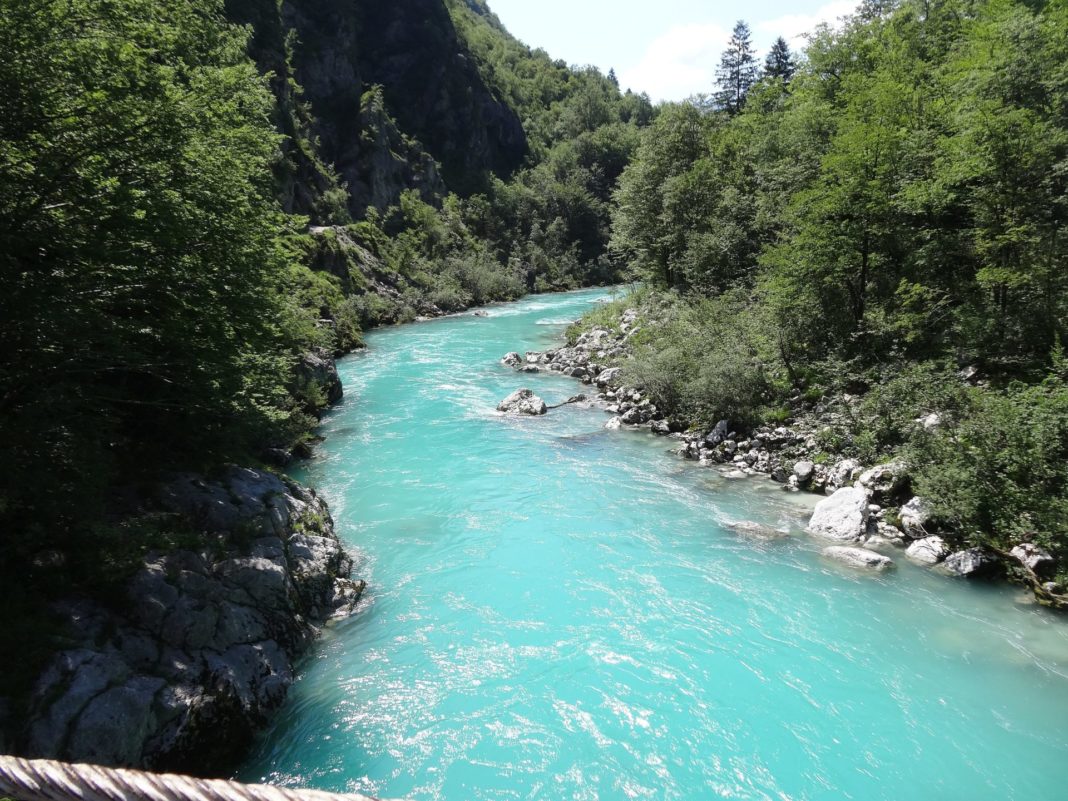The river originates in the Julian Alps and runs through the picturesque Soča Valley before emptying into the Adriatic Sea near the town of Monfalcone in Italy. The river is fed by numerous smaller streams and springs. These sources contribute to the purity and clarity of the water. The region through which the Soča River flows is characterized by limestone geology. Limestone is relatively insoluble in water, which means it doesn’t contribute much sediment or turbidity to the river. As a result, the water remains clear.
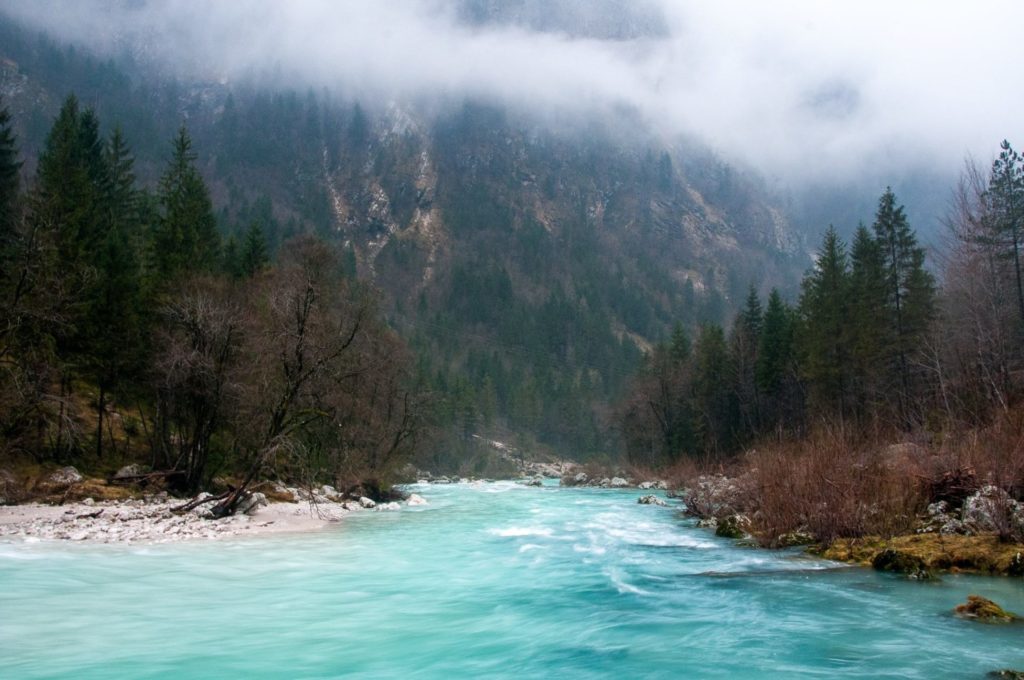
The river flows through the Soča Valley, a narrow and picturesque valley carved by the river over thousands of years. The valley is dotted with small villages, meadows, and forests, creating a scenic backdrop for outdoor activities and tourism.
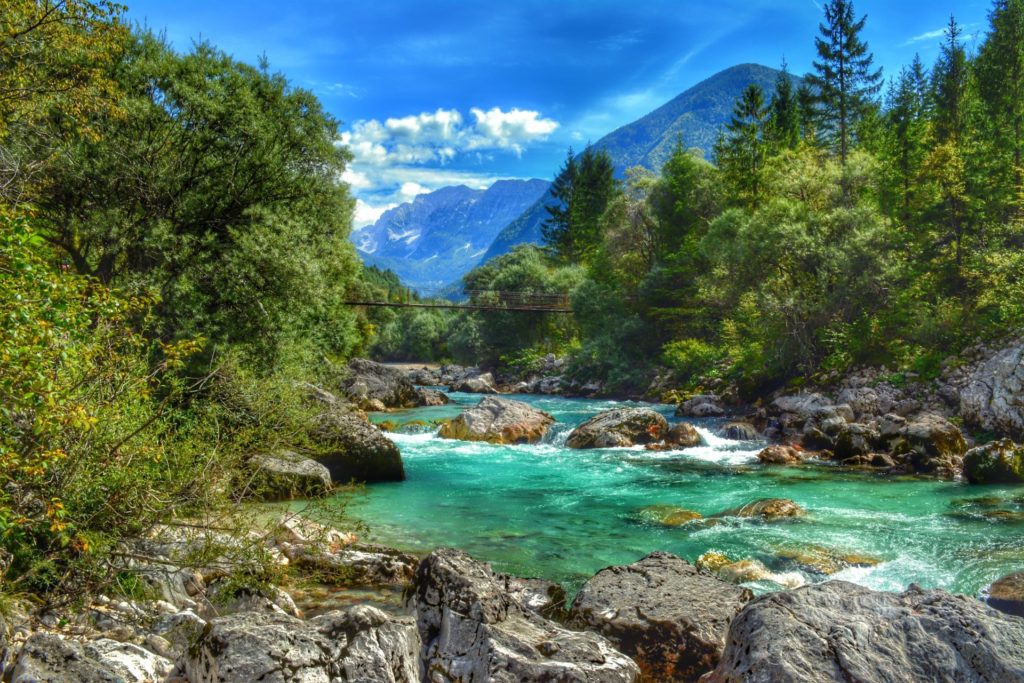
The Soča River has carved several impressive gorges along its course, including the famous Tolmin Gorges and Kobarid Gorges. These deep, narrow canyons feature sheer rock walls, cascading waterfalls, and emerald pools, attracting visitors for hiking, sightseeing, and adventure sports.
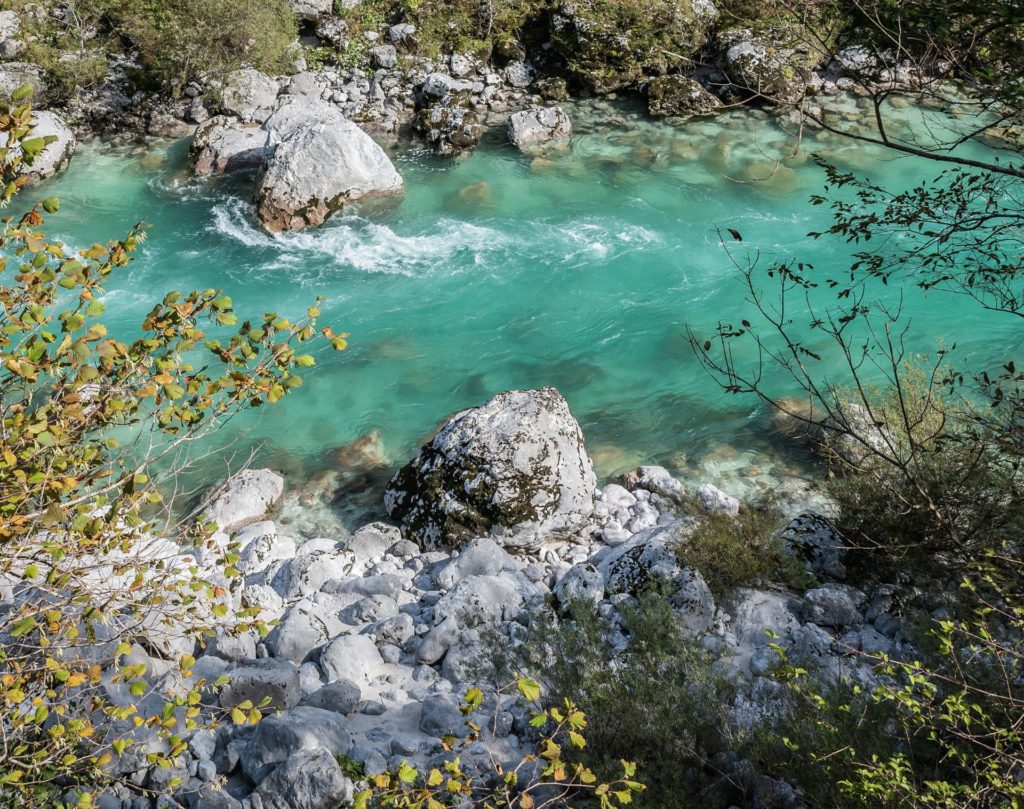
The Soča Valley has a rich cultural heritage, with historical landmarks, traditional villages, and archaeological sites scattered throughout the region. The area has a significant historical importance due to its role in World War I, particularly in the battles on the Italian Front.

Overall, the landscape of the Soča River region is characterized by its natural beauty, rugged terrain, and cultural significance, making it a popular destination for outdoor enthusiasts, nature lovers, and history buffs alike.
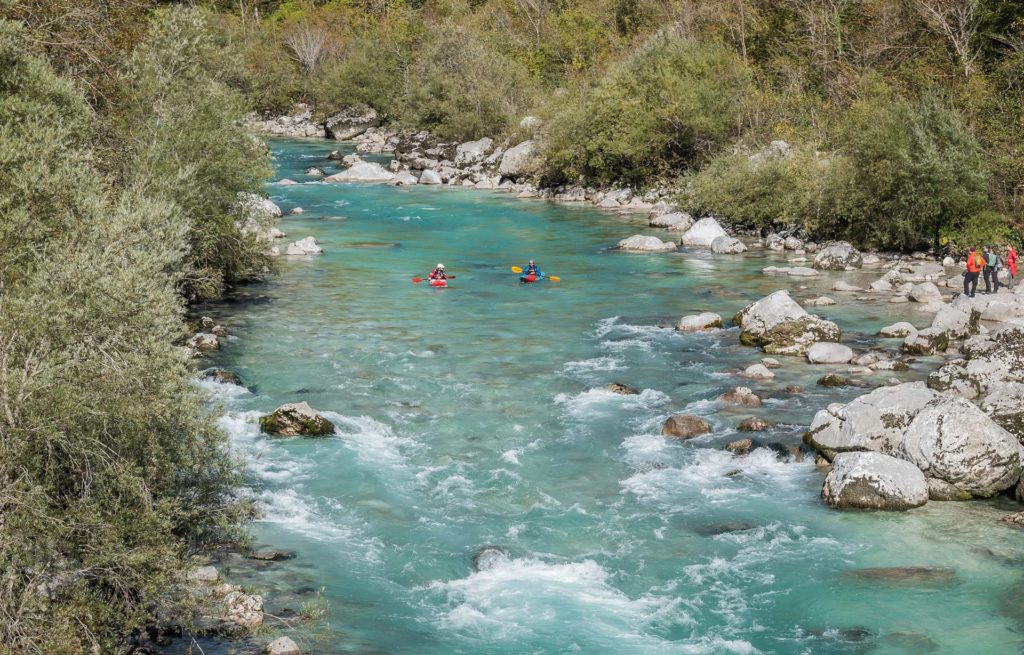
According to the Internet





